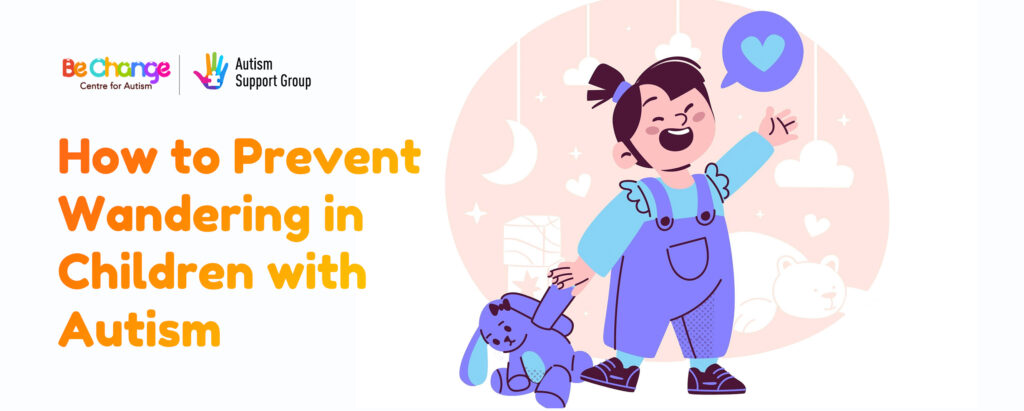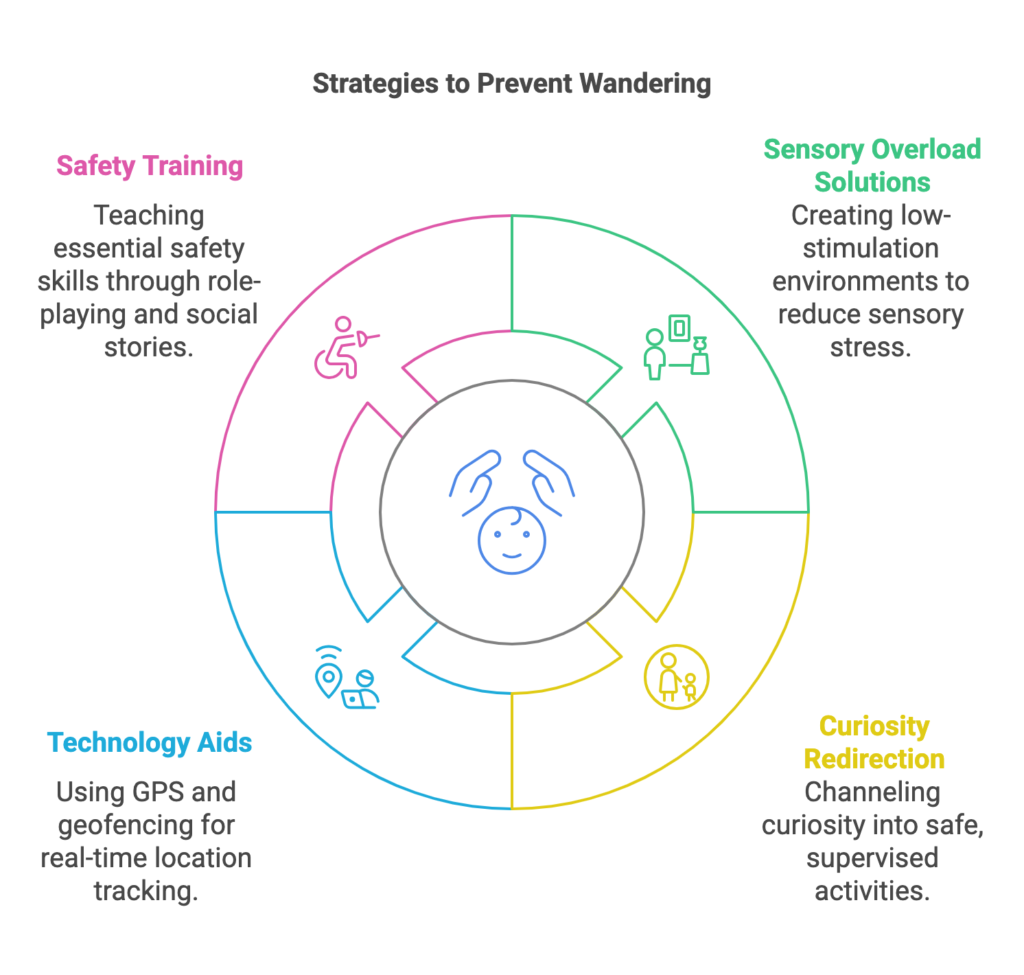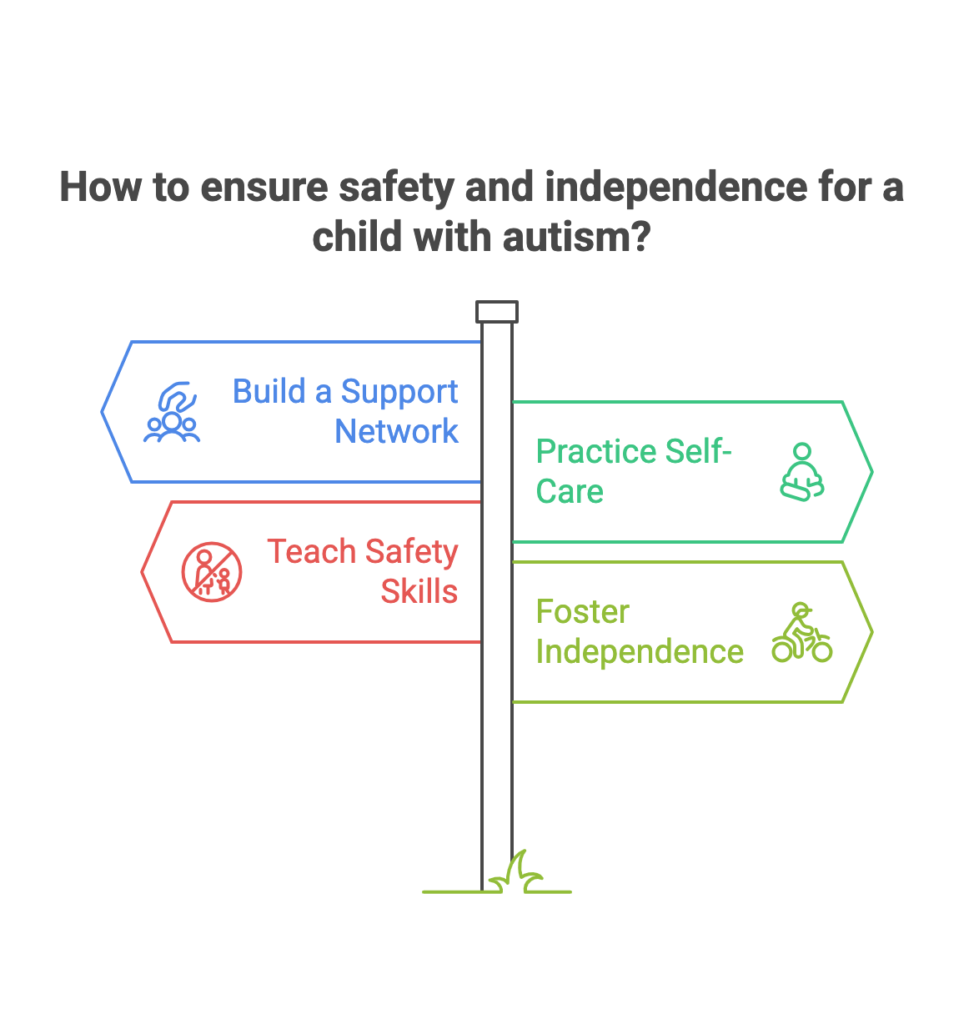
Raising a child with autism is a journey filled with unique joys, challenges, and opportunities to grow alongside your child. One of the most pressing concerns for many parents is the fear of wandering or elopement. Wandering—leaving a safe environment without permission—is common among children with autism, with nearly half of the children on the spectrum engaging in this behavior at some point. While the motivations behind wandering vary, its risks are significant, and the fear of “what if” is a constant companion for many parents.
The reasons children with autism wander are diverse. Some are overwhelmed by sensory input and seek a quieter space. Others might be drawn to something of interest, such as water, animals, or a specific location. Some wander due to anxiety or the desire to return to a familiar, comfortable place, like home. Understanding why a child might wander is the first step toward addressing this behavior effectively.
To support families in addressing and preventing wandering, this guide offers practical strategies, behavioral insights, and advice drawn from the experiences of parents, educators, and therapists worldwide.
Wandering behaviors often have a clear purpose, even if the child cannot express it. Uncovering the “why” behind the behavior is crucial for addressing it. If sensory overload triggers wandering, consider creating an environment that accommodates sensory needs. For instance, a quiet, low-stimulation space at school or home can provide the relief they might otherwise seek by leaving. If curiosity drives wandering, redirecting that curiosity toward safe, supervised activities can help channel their interest constructively.

In addition to understanding the root causes of wandering, practical solutions can offer peace of mind. Technology has become an invaluable tool for parents and caregivers of children with autism. GPS tracking devices such as Jiobit and AngelSense are designed to provide real-time updates on a child’s location. These devices can be discreetly attached to clothing, shoes, or backpacks and often include features like geofencing alerts and two-way communication. Geofencing allows parents to set virtual boundaries, triggering an alert if the child steps beyond a designated area. These tools, while not substitutes for direct supervision, serve as an extra layer of security.
Prevalence and Risk Factors
- Approximately one in four children with ASD engage in wandering behavior annually, with a higher prevalence compared to children with other developmental delays or typical development2. Children with ASD are significantly more likely to wander than those with other developmental disabilities or typical development, with rates as high as 60.4% in somestudies2.
- Wandering is more common among children with ASD who also have intellectual disabilities, with reported rates of 37.7%10. Factors such as low developmental levels and behavioral issues like anxiety and attention problems are independently associated with increased wandering2.
Safety training is another critical component of preventing wandering. Children with autism often benefit from learning essential safety skills tailored to their abilities. Role-playing and social stories are excellent tools for teaching safety concepts. Social stories use visuals and simple, structured narratives to explain scenarios such as crossing the street safely, recognizing safe adults, or responding to their name when called. These methods are highly effective for breaking down complex ideas into manageable steps that children with autism can grasp and practice.
Collaboration with schools is an essential part of any safety strategy. Schools must be active partners in ensuring the safety of children who are prone to wandering. Open communication between parents and educators is key to creating an environment where children feel safe and engaged. Schools should implement clear protocols for preventing and responding to wandering incidents. This might include assigning additional supervision during transition times, securing doors and gates with alarms, and providing staff training on the unique needs of children with autism. Parents should feel empowered to work with schools to develop individualized safety plans that address their child’s specific vulnerabilities.

In many cases, wandering can be reduced by ensuring that the child’s environment meets their sensory and emotional needs. For instance, children who wander out of boredom or overstimulation may benefit from adjustments to their schedule, allowing for more sensory breaks or structured activities that match their interests. Schools and homes that recognize and accommodate sensory differences create a more inclusive and supportive environment where wandering becomes less likely.
While it is essential to focus on prevention, it’s equally important to prepare for emergencies. Teaching children basic personal information, such as their name, address, and a trusted phone number, can make a significant difference in reuniting them with caregivers if they become lost. For nonverbal children or those with limited verbal skills, wearable ID tags or cards with this information can be lifesaving. Some GPS tracking devices also allow parents to record a message or include personal details that can be accessed by someone who finds the child.

Building a support network is another cornerstone of safety. Raising a child with autism can feel isolating, but connecting with others who share similar experiences can provide practical advice and emotional reassurance. Parent groups, both online and in-person, are valuable spaces for exchanging tips, sharing successes, and offering support. In addition, professionals such as Applied Behavior Analysis (ABA) therapists, occupational therapists, and special education teachers can provide expert guidance tailored to a child’s specific needs.
It’s essential to acknowledge that parenting a child who is prone to wandering requires constant vigilance, which can be exhausting. Self-care is not a luxury but a necessity for parents and caregivers. Seeking support from family, friends, or community resources can alleviate some of the emotional and physical strain. Remember, taking care of your own well-being enables you to care for your child more effectively.
Balancing safety with independence is one of the most complex challenges for parents of children with autism. Every parent wants their child to explore, learn, and grow in the world while also being safe. While it may be tempting to restrict their freedom entirely to avoid risk, fostering independence is crucial for their development. By teaching safety skills, implementing preventive measures, and creating supportive environments, parents can strike a balance that allows their child to thrive while minimizing danger.

This journey is not one that any parent has to walk alone. There are professionals, advocates, and communities dedicated to supporting families of children with autism. Sharing experiences, learning from others, and staying informed about the latest tools and strategies can empower parents to face challenges with confidence.
Preventing wandering is not about eliminating every risk—it’s about building a safety net that allows children to navigate their world while ensuring they remain secure. Through proactive planning, open communication, and the use of available resources, parents can create an environment where their child can explore safely and grow to their full potential.
While the fear of wandering can be overwhelming, it’s important to remember that every step taken to address it is a step toward ensuring your child’s safety. By staying vigilant, adaptable, and connected, you are providing your child with the care and protection they need to thrive in a complex and unpredictable world.

Resources
- Autism Support Group : https://www.facebook.com/groups/SupportAutism
- Youtube Podcast : https://www.youtube.com/@BeChangeCenter
- Behavior Analyst Certification Board (BACB): www.bacb.com
- Instagram : https://www.instagram.com/bechangeaba/
